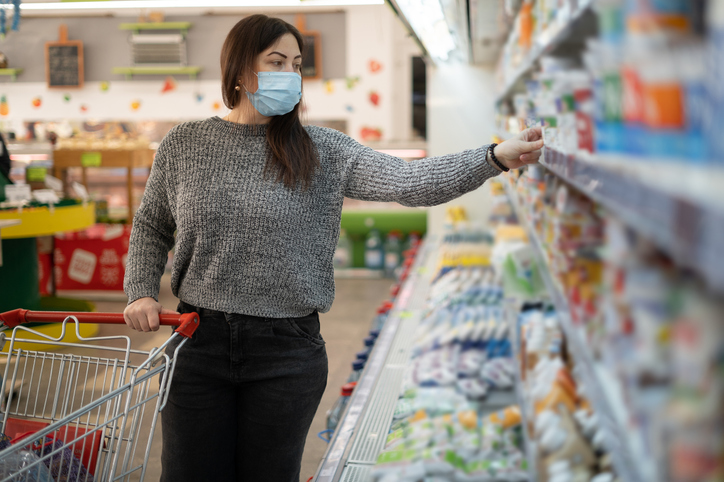
From its very onset, the COVID-19 pandemic had many implications for the food industry, from causing supply chain disruptions to creating safety concerns, both for the employees involved and the food in question. Labour shortages due to outbreaks and quarantines have been issues plaguing the global food industry from 2020 onwards. If you’re pursuing a career in food quality, technology and safety, it’s likely that you’ll encounter many of the changes brought on by the COVID-19 pandemic in the work that you do. COVID-19 has altered a significant proportion of national and international food quality and safety standards, and within your role, you may be responsible for ensuring that food services and manufacturers are operating in line with these regulations.
Here, learn more about the impact that COVID-19 has had on food safety programs and initiatives. With an understanding of the pandemic’s influence, you’ll be able to enter a career in food safety and technology equipped with an informed perspective of the industry landscape.
The Effects of COVID-19 on Food Service Operations Explained for Food Safety Program Grads
If you’re completing food safety training, it’s likely that you’ve noticed the effects of the pandemic on the way that food service establishments operate over time. At the beginning of the pandemic, one of the main concerns was the possibility that COVID-19 might be transmissible through food surfaces. However, with a lack of evidence to support this, food service operations continued to follow important safety measures (such as properly washing and sanitizing surfaces in contact with food being consumed, ensuring that food preparation procedures are safe and ensuring that cooked and stored foods attain the correct temperatures). In addition, they also added a few key food safety protocols, including:
- Disinfecting surfaces touched frequently by customers and employees
- Ensuring that customers maintain social distancing by:
- Closing areas in which customers gather, such as buffets or hot bars
- Increasing the distance between tables
- Reducing capacity
Throughout the height of the pandemic, these initiatives promoted safety within food service operations around the world. While these restrictions have been lifted in many countries, they’ve shaped the way that food safety is handled in a number of establishments.

Food service operations adopted new safety measures during the pandemic
The Introduction of More Stringent Employee Health Protocols
While employees of food manufacturing, processing and service operations have always been held to high standards of hygiene, health and safety, the pandemic has drawn attention to the importance of these measures. As a food safety program grad, you may notice a few differences in the approach to managing employee health and safety as a result of COVID-19. These changes include:
- Introducing “no-tolerance” policies for sick employees (sending sick employees home)
- Ensuring employees who have been exposed to COVID-19 or are exhibiting COVID-19 symptoms are following relevant isolation measures
- Implementing screening, disinfecting, symptom monitoring, social distancing and masking policies for employees
- Boosting hand hygiene importance, including frequent hand washing and avoiding direct hand contact
These measures worked to prevent outbreaks among employees, reducing labour shortages and prioritizing the health of those working in the food industry.

After graduating from a food safety program, you could notice new safety standards in place for employees as a result of the pandemic
New Recommendations for Consumers at Home
Regulatory agencies around the world also shared recommendations for shoppers and consumers concerned about the safety of their food during the pandemic. While some recommendations existed before the pandemic, governments have reiterated them and added new ones. Recommendations for consumers include:
- Washing fruits and vegetables from the store with running water
- Cooking foods to suggested internal temperatures as an effective method of killing viruses and bacteria
- Disinfecting all food surfaces
- Minimizing frequent trips to the grocery store
With these in mind, consumers are able to maintain their safety with regards to food consumption throughout the pandemic.

Consumers followed certain safety practices surrounding food during the COVID-19 pandemic
As a result of COVID-19, approaches to food consumption also shifted around the world, with more people cooking at home rather than going out, or using technology to order food for takeout or delivery. With the changes that COVID-19 has brought to the food safety industry, it’s likely that we’ll see the impact of these measures in the future, as pandemic restrictions ease and we become accustomed to the “new normal.” If you’re entering the food safety and quality industry, look out for what’s to come!
Interested in earning a food technology diploma?
Launch your career with a program at AAPS!



